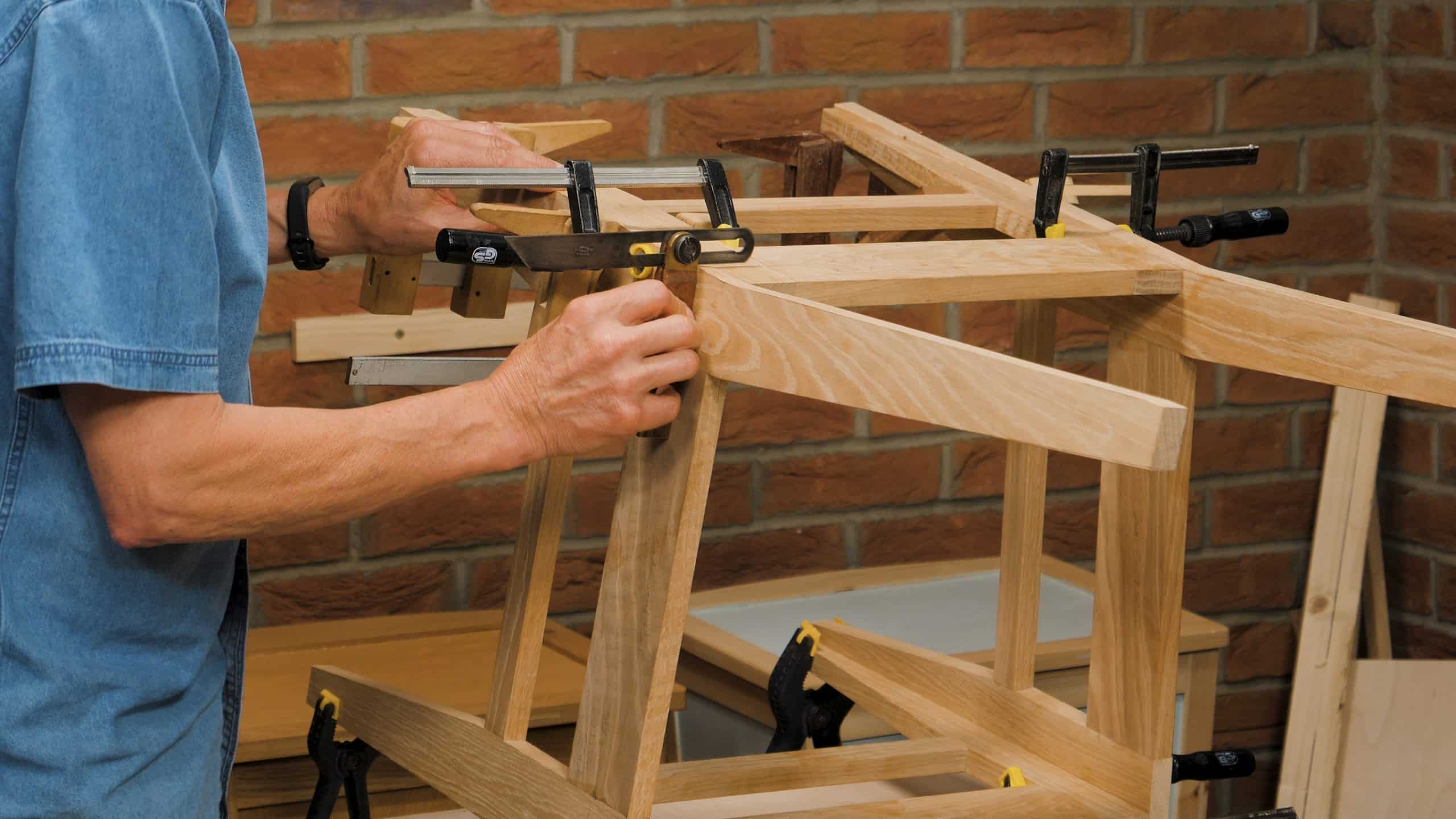Desk Chair: Episode 4
Posted 11 September 2019
This is an episode in a paid series. Want to watch it? You just need to sign up as a paid member, and you can enjoy this video and many other videos we think you will love.
We are really excited to introduce you to some bent laminations in this project. In this episode, Paul shows how to take three thin strips and turn them into a super-strong, curved slat for the seat and back of the chair. Then Paul uses the curved slat to lay out the curve for the front and back apron and the angle for the top of the side aprons, which he then cuts to follow the lines.


Very beautiful chair you’re making, Paul.
Back in the days when my dad was running the shop, we used to make large arched profiled moulding for architectural woodwork. We used this lamination method too, but we had a gluer pot for the glue up. As for the clamping, we had a few dozen of C clamps with the handles cut off and welded nuts instead, so a socket wrench or a driver would drive those clamps in fast. Some of the C clamps even got bent! That’s how much tension it had. One thing, that we made sure to keep was the grain indexation…that way the moulding looked like one piece of wood with continued grain.
Thanks for these masterclasses. There is so much good education in here that if anyone dropped their work and kept repeating what you make, at the end of the day we would have a great craftsman in wood.
Dear Paul!
Laminating is new technique for me, thank you for introducing it.. Probably you cat pieces for laminate on Band Saw. How is it cutting with hand saw, Frame Saw?
Kindest regards,
Sven
Re-sawing and preparation of thin stock using hand tools is excellently taught in episode one of The Chessboard Project, I think.
When three slats (each with three members) are clamped together wont they come out with slightly different radii of curvature?
I have seen some tips online that advice to even adjust the radii of the upper and lower caul members to account for the thickness of the curved piece being made. While such mathematical rigour appears uncalled for, gang-clamping multiple slats could lead to visible differences between pieces.
Is that unimportant in this case as the slats can be flexed to seat while screwing on to the rails?
Uhh, I just think it’s not that big of a deal, it’s a milking stool so the geometry down to a degree probably isn’t worth any mind.
For the tolerances that we are working on here, the only difference between the two radii is the thickness of the saw kerf. No matter how many lamination’s you put between those cauls, the radius of the curve on each caul has not changed. What has changed is that you have offset the centre point of the radii by the thickness of the lamination.
Geometry of of circles doesn’t work like that[*], but I get the point. For our purpose here, gang-clamping a few looks fine.
[*] I don’t want to get into a geometry lesson here, but identical circles with shifted centers are not parallelly displaced.
I’ll create a thread in off topic, because I am curious now… 🙂
Does any one know whether it makes a difference, for these bent laminated parts, whether one uses red or white oak? Flat sawn or quarter sawn? Do any of those work better than the others? I would think that some of these will bend better (without breaking?) than others.
Hi,
Paul says:
They don’t break anyway and you can use any wood you want, ie. the red or white Oak.
Kind Regards,
Izzy